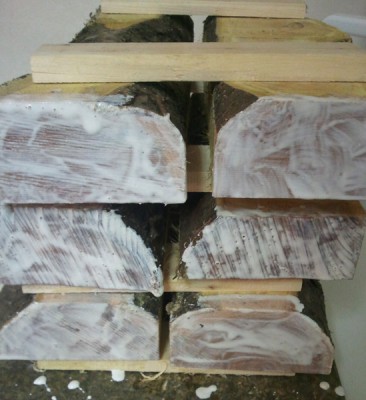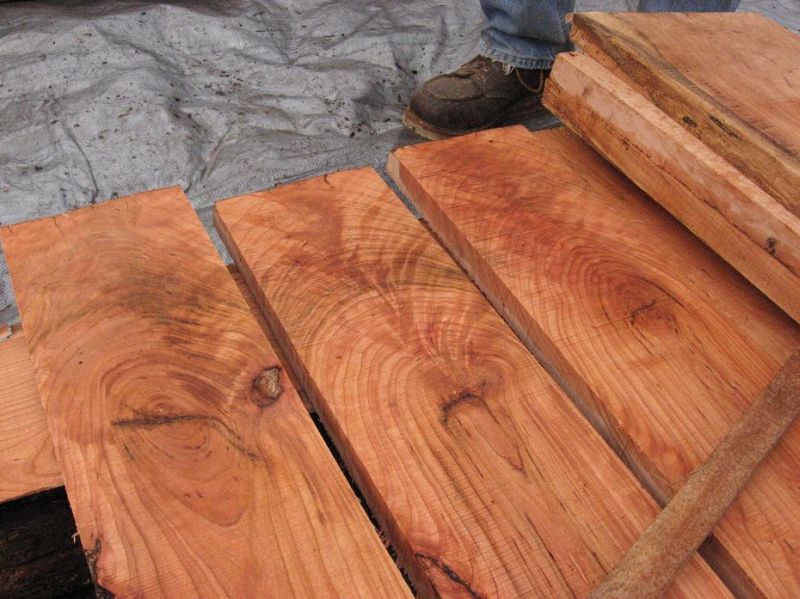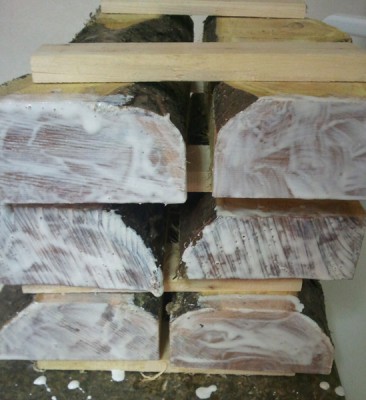Have you ever wondered how long it takes for cherry wood to dry? Well, you’re in luck! In this article, we’ll dive into the fascinating world of wood drying and explore the drying process for cherry wood. So, if you’re curious about this topic, keep reading to satisfy your curiosity!
When it comes to drying cherry wood, patience is key. Unlike some other types of wood, cherry wood can take a bit longer to dry properly. The drying time can vary depending on several factors, including the thickness of the wood and the environmental conditions. So, if you’re planning to use cherry wood for a project, it’s important to understand the drying process to achieve the best results.
So, how long does it actually take for cherry wood to dry? Well, you’ll have to stay tuned to find out! In the next few paragraphs, we’ll break down the drying process and explore the factors that can influence the drying time of cherry wood. Get ready to delve into the world of wood drying and discover the secrets behind getting that perfect piece of dry cherry wood. Let’s get started!

How Long Does It Take for Cherry Wood to Dry?
Cherry wood is prized for its beautiful grain, rich reddish-brown color, and durability. Whether you’re using it for furniture, flooring, or woodworking projects, it’s important to know how long it takes for cherry wood to dry properly. Proper drying ensures that the wood is stable, less prone to warping or cracking, and ready for use. In this article, we’ll explore the factors that influence the drying time of cherry wood and provide some tips for the best results.
1. Moisture Content of Cherry Wood
The moisture content of cherry wood plays a significant role in determining its drying time. Freshly cut cherry wood usually has a moisture content of above 50%. To be suitable for woodworking, the moisture content needs to be reduced to around 6-8%. The drying process allows the excess moisture to evaporate from the wood, which helps prevent issues like warping or splitting.
The time it takes for cherry wood to dry depends on the thickness of the wood, the environmental conditions, and the drying method employed. On average, it can take anywhere from several weeks to several months for cherry wood to reach the desired moisture content. It’s essential to monitor the moisture levels regularly during the drying process to avoid over-drying or under-drying the wood.
To expedite the drying process, you can use kiln drying or air drying methods. Kiln drying typically takes around 3-7 days, as the wood is placed in a controlled environment with specific temperature and humidity levels. Air drying, on the other hand, can take several months to a year, as the wood is stacked and exposed to air in a well-ventilated area.
2. Factors Affecting Drying Time
Several factors influence the drying time of cherry wood:
- Wood Thickness: Thicker pieces of cherry wood will naturally take longer to dry than thinner pieces.
- Ambient Humidity: Higher humidity levels can slow down the drying process, while lower humidity levels can speed it up.
- Air Circulation: Proper air circulation is essential for drying wood efficiently. Good airflow helps facilitate moisture evaporation.
- Wood Density: Denser woods like cherry can take longer to dry compared to less dense woods.
- Wood Orientation: The way the wood is cut or sawn can affect drying time. Quarter-sawn wood usually dries more evenly and quickly than plain-sawn wood.
To maximize the drying efficiency, it’s recommended to stack the cherry wood in a way that allows for good airflow. Placing spacers between the boards or using sticker strips helps promote air circulation and reduces the risk of mold or fungus growth during the drying process.
3. Tips for Proper Drying
Here are some tips to ensure the proper drying of cherry wood:
- Seal the Ends: To prevent excessive moisture loss and minimize splitting, seal the cut ends of the cherry wood with a wood sealer or wax.
- Use a Moisture Meter: Invest in a moisture meter to accurately measure the moisture content of the wood throughout the drying process.
- Monitor Conditions: Keep an eye on temperature, humidity, and air circulation to create the optimal drying environment.
- Patience is Key: Avoid rushing the drying process. Allowing the wood to dry slowly and naturally helps ensure the best results.
By following these tips and being diligent in monitoring the moisture content, you can ensure that your cherry wood dries properly and is ready for use in your woodworking projects. Remember, proper drying not only enhances the appearance but also improves the longevity and stability of the wood.
The Impact of Cherry Wood Drying Time on Woodworking Projects
When working with cherry wood for various woodworking projects, understanding the drying time and how it affects your projects is crucial. Let’s explore some key considerations related to the drying time of cherry wood and its impact on woodworking:
1. Stability and Dimensional Changes
Properly dried cherry wood is more stable, meaning it’s less likely to warp, crack, or shrink. When cherry wood is not adequately dried before use, it can experience significant dimensional changes, leading to problems in fitting joints or creating uneven surfaces. By drying the wood to the appropriate moisture content, you can ensure the best results in terms of stability and dimensional accuracy in your woodworking projects.
2. Finishing and Appearance
The drying process affects both the appearance and finishing of cherry wood. When cherry wood dries slowly and evenly, it develops a more pronounced and rich color, enhancing its natural beauty. Proper drying also helps prevent issues like color variations, blotching, or uneven absorption of finishes and stains. By taking the time to dry cherry wood properly, you can achieve a more consistent and aesthetically pleasing finish.
3. Workability and Ease of Woodworking
Drying cherry wood to the optimal moisture content improves its workability and ease of woodworking. Properly dried cherry wood is easier to cut, shape, and join, reducing the risk of tear-out or other undesired effects. It also minimizes the chances of the wood moving or warping during the woodworking process. Taking the time to dry cherry wood thoroughly will result in a smoother and more efficient woodworking experience.
Best Practices for Drying Cherry Wood
To ensure the best results when drying cherry wood, here are some additional tips and best practices:
1. Proper Storage
When air drying cherry wood, it’s essential to stack it properly to facilitate airflow and prevent mold or fungus growth. Use stick strips or spacers between the boards to create even gaps and allow for consistent drying. Choose a well-ventilated area for storing the wood and protect it from direct sunlight and excessive moisture during the drying process.
2. Monitoring Moisture Content
Invest in a reliable moisture meter to regularly check the moisture content of the wood. This will help you track the drying progress and ensure that the wood is reaching the desired moisture content. Take measurements in various locations and depths to ensure an accurate representation of the moisture content throughout the wood.
3. Patience and Testing
Be patient throughout the drying process and resist the temptation to rush it. While it may be tempting to start using the wood as soon as possible, premature use can lead to problems down the line. Regularly test the moisture content of the wood and wait until it stabilizes before using it in your woodworking projects. It’s better to wait a little longer to ensure the wood is adequately dried than to experience issues later on.
Conclusion
Knowing how long it takes for cherry wood to dry is essential for woodworking enthusiasts and professionals alike. By understanding the factors affecting drying time, following proper drying techniques, and being patient, you can ensure that your cherry wood is dried to the optimal moisture content. Properly dried cherry wood offers stability, improved workability, and enhanced aesthetics, resulting in high-quality woodworking projects that stand the test of time. So, take the time to dry your cherry wood properly, and enjoy the beauty and durability it brings to your creations.
Key Takeaways: How Long Does It Take for Cherry Wood to Dry?
- Cherry wood typically takes about six months to a year to air dry.
- Thicker cherry wood pieces may require longer drying times.
- Using a kiln can speed up the drying process to a few weeks.
- Air drying cherry wood helps improve its stability and prevents cracking or warping.
- It’s important to monitor the moisture content of the wood with a moisture meter.
Frequently Asked Questions
When it comes to drying cherry wood, there are several factors at play. Here are some common questions people have about the drying process:
1. What are the factors that influence the drying time for cherry wood?
Several factors affect the drying time for cherry wood. The thickness of the wood, the humidity and temperature of the drying environment, and the method used for drying all play a role. Thicker pieces of wood take longer to dry, while higher humidity and lower temperatures can also lengthen the drying time. Additionally, the method of drying, whether air-drying or kiln-drying, can impact how long it takes for cherry wood to dry.
With all these factors in mind, it’s challenging to give an exact timeframe for cherry wood to dry. However, on average, cherry wood can take anywhere from several months to more than a year to dry properly. Patience and monitoring the moisture content of the wood are key.
2. What is the recommended moisture content for dried cherry wood?
The recommended moisture content for dried cherry wood used in woodworking projects is usually around 6 to 8 percent. This level of moisture content ensures the wood is stabilized and less prone to shrinking, warping, or cracking. It’s crucial to let the wood acclimate to the environment in which it will be used to prevent any further changes in moisture content after the drying process.
To ensure the cherry wood is properly dried, it’s essential to use a moisture meter to check the moisture content periodically. This allows you to track the progress of the drying process and ensure the wood reaches the desired moisture level.
3. Can I accelerate the drying process for cherry wood?
While it’s possible to accelerate the drying process for cherry wood, it’s important to proceed with caution. Rapid drying methods, such as using high heat or direct sunlight, can cause the wood to dry unevenly and result in cracks or other defects. It’s best to opt for a gradual drying process to maintain the quality of the wood.
If you want to speed up the drying time, consider using a kiln or a dehumidification system. These methods allow for more controlled drying conditions, ensuring the moisture is removed evenly from the wood. However, it’s still crucial to monitor the wood’s moisture content throughout the process and adjust the drying parameters accordingly.
4. Are there any signs to look for to determine if cherry wood is fully dry?
There are a few signs you can look for to determine if cherry wood is fully dry. First, check the moisture content using a moisture meter. If the reading consistently falls within the desired range (around 6 to 8 percent), it’s a good indication that the wood is dry.
Additionally, fully dried cherry wood tends to feel lighter in weight compared to its freshly cut state. You might also notice that the wood feels smooth to the touch and produces a resonant sound when tapped. These indicators, along with a stable and acclimated moisture content, suggest that the cherry wood is fully dry and ready for use.
5. What happens if I use cherry wood that isn’t fully dry?
If you use cherry wood that isn’t fully dry in your woodworking projects, it can lead to various issues down the line. Wood that hasn’t dried properly can shrink, warp, or crack as it continues to adjust to the surrounding environment. These changes can negatively impact the structural integrity and aesthetics of your project.
To avoid these problems, it’s crucial to ensure the cherry wood is thoroughly dried before using it in any woodworking project. Investing the time and effort into properly drying the wood will result in a better final product that is more stable and less prone to future issues.

How Long Does it Take to Dry Lumber? How Dry Does it Need to Be?
Summary
Cherry wood takes about 6 to 12 months to dry properly before it can be used. The drying process helps remove moisture from the wood, making it stronger and more stable.
It’s important to store the wood in a dry and well-ventilated area to prevent warping or cracking. Regularly checking the moisture content using a moisture meter can ensure that the wood is dry enough for use.
